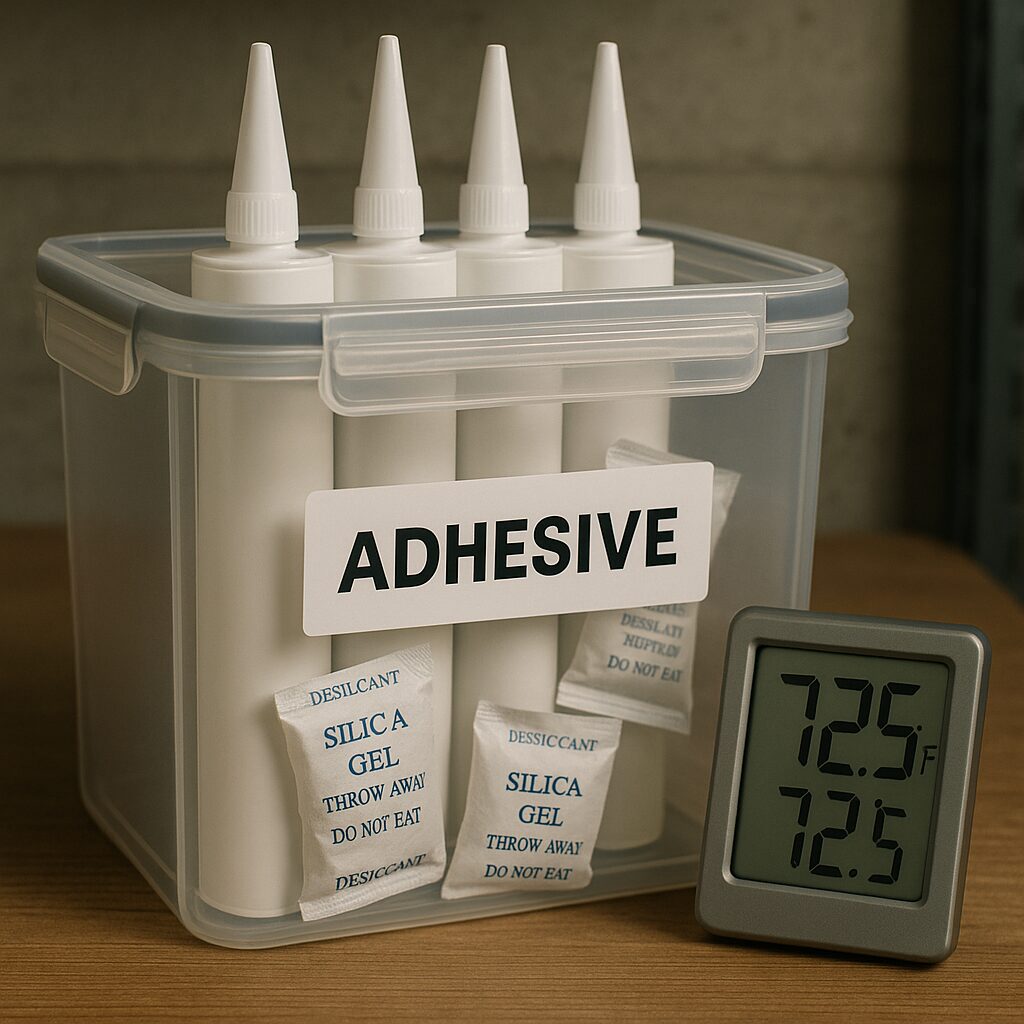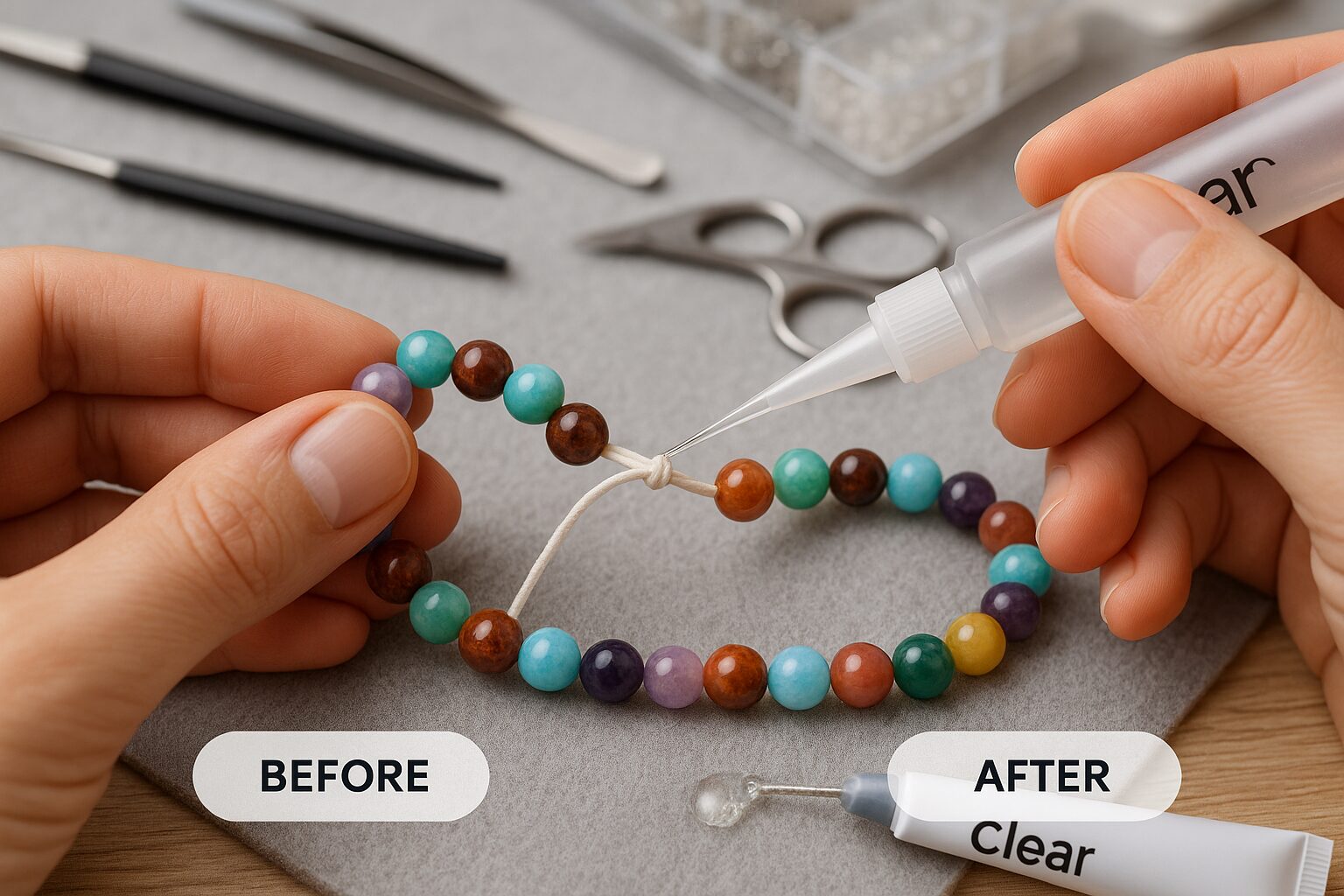In industrial and consumer applications alike, adhesives play a critical role in product integrity, manufacturing efficiency, and safety. However, one overlooked factor that directly impacts adhesive performance is its shelf life—the duration during which an adhesive remains chemically stable and functionally effective under proper storage conditions.
In this guide, we’ll explain what determines adhesive shelf life, how to interpret it, and the most effective storage practices to maintain optimal adhesive performance.
What Is Adhesive Shelf Life?
Adhesive shelf life refers to the period during which the adhesive retains its intended bonding characteristics, viscosity, cure properties, and chemical integrity when stored under recommended conditions. Once past this date, even unopened adhesives may undergo chemical degradation, loss of bonding strength, or curing inconsistencies.
Shelf life is typically determined by manufacturers through accelerated aging tests and is influenced by the adhesive’s chemical composition, form (liquid, tape, or film), and packaging type.
How Long Do Adhesives Last?
Shelf life varies significantly depending on the type of adhesive:
| Adhesive Type | Average Shelf Life (Unopened) |
|---|---|
| Cyanoacrylate (Super Glue) | 6–12 months at room temperature |
| Epoxy (2-part systems) | 12–24 months |
| Polyurethane Adhesive | 9–15 months |
| Hot Melt Glue | 12–24 months |
| Silicone Adhesive | Up to 24 months |
| Pressure Sensitive Adhesives (PSA) | 12–18 months |
How to Read Shelf Life Labels?
Most adhesive products include either a “Use By” date or a “Date of Manufacture” followed by a shelf life period (e.g., “12 months from DOM”). Interpretation requires referencing the manufacturer’s documentation.
Example:
- DOM: Jan 2024
- Shelf Life: 12 months
- Expiry: Jan 2025
If only batch codes are provided, manufacturers usually have lookup tools or customer support for decoding.
Factors That Shorten Adhesive Shelf Life
Adhesives degrade faster when exposed to:
- Heat: Elevated temperatures accelerate chemical reactions and curing.
- Humidity or Moisture: Can pre-activate moisture-cured systems (e.g., cyanoacrylate).
- UV or Light Exposure: Some adhesives are UV-sensitive and must be stored in opaque containers.
- Oxygen Exposure: Air exposure leads to hardening or polymerization in reactive systems.
- Contaminants: Even minor exposure to dust, oil, or other chemicals can alter curing properties.
Best Storage Conditions for Adhesives
To extend adhesive shelf life and maintain bonding integrity, adhere to these expert-recommended storage practices:
1. Maintain Stable Temperature
Store adhesives in a cool, dry place—ideally between 5°C and 25°C (41°F–77°F) unless specified otherwise. Refrigeration may be suitable for some formulas, like cyanoacrylate, but always warm to room temperature before use.
2. Control Humidity
Use airtight containers or desiccant packs to prevent moisture exposure, especially important for moisture-cure adhesives.
3. Store Upright in Original Packaging
Keep adhesives in their original containers to protect against contamination. For tubes, upright positioning helps reduce clogging and leakage.
4. Avoid Frequent Opening
Once opened, shelf life drastically shortens. Choose single-use or small-pack adhesives like Super Glue Gel 4G by GH1200 for limited projects to avoid waste.
5. Rotate Stock (FIFO Method)
Use the First In, First Out (FIFO) inventory method to ensure older adhesives are used before the newer stock expires.

Storage Tips by Adhesive Type
| Adhesive Type | Storage Recommendation |
|---|---|
| Cyanoacrylate | Refrigerate unopened; reseal tightly after use |
| Epoxy Resin | Store in dry cabinets; avoid temperature fluctuations |
| Hot Melt Glue | Room temperature, sealed bag to prevent oxidation |
| Silicone Sealant | Avoid freezing; store in an upright position |
| PSA Tapes | Flat storage, protected from dust and UV light |
What Happens If You Use Expired Adhesive?
Using expired adhesive can lead to:
- Weak bonding or total failure
- Inconsistent curing
- Surface incompatibility issues
- Clogging in automated systems
- Increased reject rates or rework in production
In critical applications like aerospace, electronics, or medical devices, using expired adhesives may void warranties or regulatory compliance.
Pro Tip: Keep an Adhesive Log
Track lot numbers, storage dates, and expiration in a simple inventory log. This ensures traceability and reduces the risk of using compromised material in production.
Trusted Tools for Storage
Consider investing in:
- Climate-controlled cabinets for temperature-sensitive adhesives
- Humidity indicator cards for moisture detection
- Re-sealable adhesive dispensers to protect unused portions
- Label printers to mark expiry and open dates
These tools are essential for manufacturers, laboratories, and repair shops where adhesive reliability is mission-critical.
Final Thoughts
Adhesive shelf life isn’t just a label it directly affects performance, safety, and cost. Following proper storage protocols, understanding expiry dates, and choosing packaging that fits your usage habits can prevent waste and ensure strong, consistent results.
Whether you’re working with cyanoacrylate, epoxy, or silicone-based adhesives, knowing how to store them properly protects your investment and ensures every bond is as strong as intended.
Frequently Asked Questions (FAQs)
1. How long is the shelf life of industrial adhesives?
Most industrial adhesives have a shelf life ranging from 6 to 24 months, depending on their chemical composition. For example, cyanoacrylate glues last 6–12 months, while epoxies and silicones can last up to 2 years if stored correctly.
2. What factors affect adhesive shelf life the most?
Temperature, humidity, UV exposure, oxygen, and contamination are the main factors that reduce adhesive shelf life. High heat and moisture can cause early curing, while air and light degrade sensitive formulas over time.
3. How can I tell if an adhesive has expired?
Check for changes in viscosity, color, odor, or performance. Expired adhesives may appear thick, discolored, or form weak bonds. Manufacturers often print a “use by” date or batch code to confirm expiration.
4. Can expired adhesives still be used for non-critical applications?
In non-structural or low-risk uses, some expired adhesives may still offer partial bonding. However, for reliability, it’s best to avoid expired adhesives in load-bearing, electrical, or safety-sensitive applications.
5. What are the best practices to extend adhesive shelf life?
Store adhesives in a cool, dry place between 5°C and 25°C, reseal tightly after use, and avoid contamination. Use anti-clog caps, desiccant packs, and the FIFO method to manage inventory efficiently.





